
Discover Our Mineral Collection
Sorbonne University is home to one of the oldest mineral collections in France
Managed by the Institute of Mineralogy, Physics of Materials and Cosmochemistry (IMPMC) until 2022, the Mineral Collection now falls under the Scientific Collections and Heritage division of the Sorbonne University library. Céline Paletta, head of the collection, and Paola Giura, president of the scientific council and head of research and teaching, open the doors to this university jewel.
The first indications of its creation date back to 1823, when François Sulpice Beudant, the chair of Mineralogy at the Faculty of Sciences, acquired 1146 samples and published his methodical catalog of minerals. The collection was subsequently enriched by numerous purchases, donations and deposits “until its transfer in 1970 to the Pierre and Marie Curie campus. Jean Wyart, then head of the Mineralogy Laboratory at the Sorbonne, and Pierre Bariand, head of the collection, implemented its opening to the public,” recalls Céline Paletta.
With nearly 16,000 samples and around a hundred measuring instruments and educational objects, the collection today offers exceptional diversity.

Céline Paletta et Paola Giura dans la salle d'exposition de la collection © Sorbonne Université
“Only 1,500 minerals are on exibit, representing around 1,000 types among more than 5,500 known,” explains Paola Giura. Every year new minerals are discovered.” The exhibition highlights original pieces, favoring remarkable crystalline forms that the scenography of the 1970s, with its panoramic windows, that allows you to admire them from all angles. “For example, we have three of the seven largest cumengeites discovered in the world. These are exceptional little blue stars exclusively from the Boléo mine in Mexico,” adds Céline Paletta.
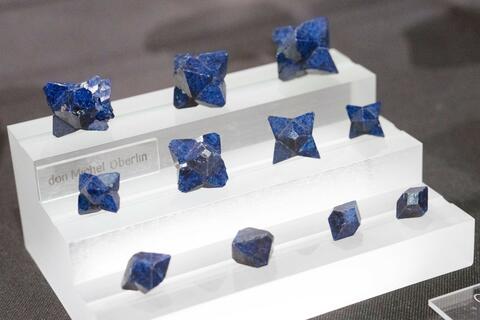
Cumengéites venant du Mexique © Sorbonne Université
A dynamic research field
In Paris, the Sorbonne University mineral collection, along with the National Museum of Natural History and the School of Mines, are among the richest in the world, each with its own specificity. The Sorbonne University collection is distinguished by its commitment to research and teaching. “We respond in particular to requests for samples from researchers from various disciplines: geologists, physicists, chemists, doctors, and others.” explains Paola Giura. We therefore modestly contribute to research on the contamination of urban soils, the fight against sarcoidosis or silicosis, for example. We even provided samples for a mission to Mars!" Even more surprising, certain minerals were used in the analysis of the stained glass windows of Notre-Dame de Paris, highlighting the collection's commitment to interdisciplinary research.
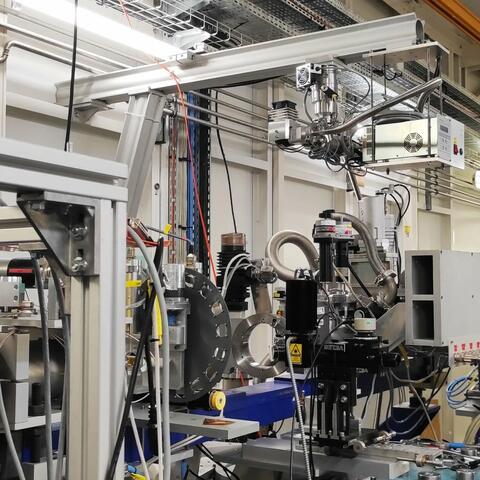
Mesure de la dynamique atomique d'un monoscristal d'hématite à l'European Synchrotron Radiation Facility de Grenoble © Sorbonne Université
“We offer internships at all levels and in varied fields of study, ranging from gemology to chemistry, materials sciences and physics. Students from the Communication and Mediation minor contribute to the promotion of temporary exhibitions, while others in art history come to learn how to draw samples" says Paola Giura.
With its close links with the IMPMC, the collection benefits from access to experimental platforms, including sophisticated equipment such as electron microscopies, spectrometers, and even large instruments such as synchrotrons. The research carried out on samples from the collection aims to discover new mineral species, but also to better preserve the specimens on display. “Several factors can in fact alter samples: humidity, air, biological contamination and UV rays. Analyzes are carried out occasionally on the deposits that form inside the display cases, altering the shine and luster of the minerals,” explains the president of the scientific council.
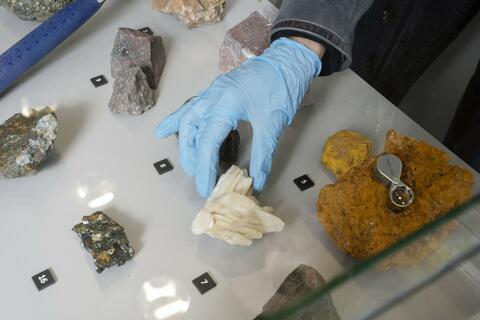
Des analyses sont menées sur les dépôts qui se forment à l'intérieur des vitrines. © Sorbonne Université
But the conservation of minerals also requires the establishment of new systems to control the conditions of conservation and inventory of collections. “In close collaboration with the Scientific Collections and Heritage division, we are carrying out a precise inventory of the needs for packaging, management and promotion of the collections. The objective being to preserve, put online and make known our exceptional university collections” adds Céline Paletta.
Showing the general public the riches of the Earth
The Mineral Collection has been part of the Scientific Collections and Heritage division of the library since in 2023, and the collection is increasing its awareness-raising efforts.
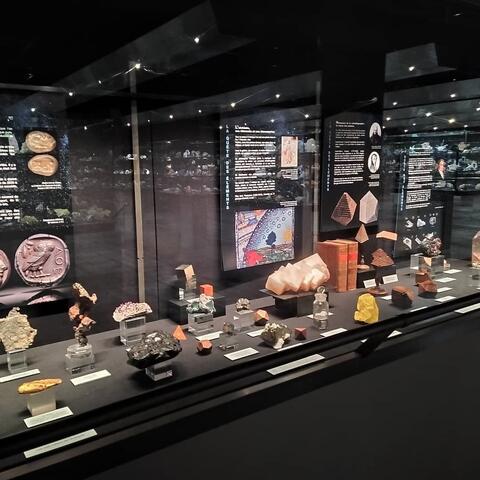
Exposition temporaire " La quête des éléments " dédiée à la chimie du monde minéral © Sorbonne Université
It offers two temporary exhibitions per year, several thematic visits, develops partnerships with artists or scientific and cultural institutions, then participates in international events such as Museum Night, Heritage Days and the Science Festival.

"Inclusion", performance de danse à la collection des minéraux © Sorbonne Université
The collection also strives to develop specific programming for schools, with an emphasis on primary schools. “A website with online resources for teachers will be created. It will be accompanied with training proposals, in partnership with the Maison pour la Science," indicates Céline Paletta, "and the provision of educational kits intended for practical work.” These modules allow you to understand through experience varied aspects, such as color, light or the recognition of minerals.
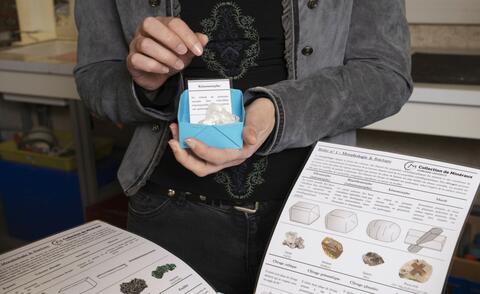
Malle pédagogique © Sorbonne Université
As dynamic part of research and training, the mineral collection represents a catalyst for future explorations. Deeply rooted in the history of the university, and of exceptional beauty, it embodies a living heritage, an inexhaustible source of discovery and wonder for generations to come.
